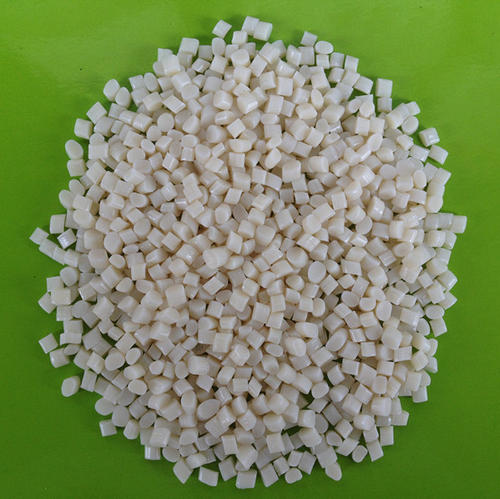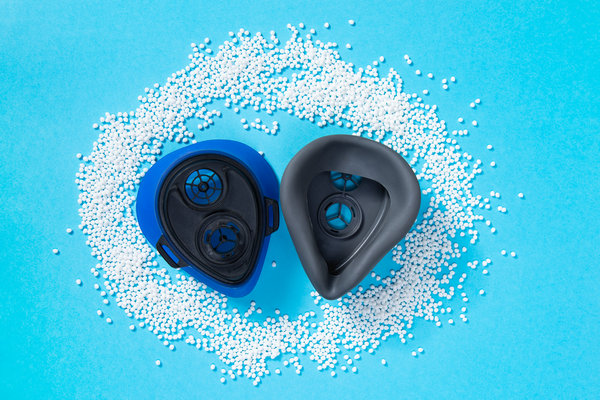Having spent over a decade in the polymer processing industry, I’ve faced countless challenges on the production floor. Few things are as frustrating as dealing with sticky TPE. You’re all set for a smooth production run, the machine is humming, and then—it happens. The parts won’t release cleanly, they stick to the mold, or worse, they come out with surface defects that make them unusable. I’ve been there, and I know how much downtime and material waste this can cause. It’s not just a technical issue; it feels like the material is working against you.
Understanding why TPE gets sticky isn’t just about reading a manual. It’s about combining science with hands-on experience. Over the years, I’ve come to appreciate that stickiness isn’t a single-issue problem. It’s often a cascade of factors, from material selection to process parameters. And getting to the root of it requires a blend of analytical thinking and practical tweaking.
In this article, I’ll break down the common—and not-so-common—reasons behind TPE stickiness during injection molding. More importantly, I’ll share actionable solutions that have worked for me and many others in the field. Let’s get into it.

What Makes TPE Prone to Stickiness?
TPE, or Thermoplastic Elastomer, is a fascinating material. It bridges the gap between thermoplastics and rubbers, offering flexibility without the need for vulcanization. But that very flexibility can sometimes backfire. The soft, rubbery segments that give TPE its elastic properties can also make it adhere to mold surfaces if conditions aren’t just right.
I often think of TPE as a high-performance athlete. It performs brilliantly when everything is optimized—but it’s also sensitive to imbalances. Stickiness usually arises when the material’s surface properties interact poorly with the mold environment. Let’s explore the key culprits.
Key Reasons for TPE Stickiness and How to Address Them
1. Material Composition and Formula Issues
Not all TPEs are created equal. Some formulations are inherently more tacky due to their chemical makeup. For instance, TPEs with a high proportion of soft segments (like certain SEBS or SBS blends) can exhibit more adhesion. I’ve seen cases where a minor change in the supplier’s formula led to sudden stickiness, even though the grade name remained the same.
Another aspect is the use of additives. Plasticizers, oils, or other processing aids can migrate to the surface during molding, creating a sticky film. If the additive package isn’t balanced correctly, it can do more harm than good.
What you can do:
Work closely with your material supplier to understand the formulation.
Request TPE grades with internal mold release properties if stickiness is a recurring issue.
Consider adding a small percentage of external mold release agents—but use them sparingly to avoid build-up.
2. Inadequate Mold Release Agent or Application
Mold release agents are your first line of defense against stickiness. But here’s the thing: more isn’t always better. I’ve encountered situations where operators applied too much release agent, leading to residue build-up that actually increased adhesion over time. It’s like putting too much glue on a sticker—it doesn’t help.
Alternatively, using the wrong type of release agent for your TPE grade can cause compatibility issues. Silicone-based agents might work for some materials but not others.
What you can do:
Choose a release agent specifically designed for TPE materials.
Apply thin, even coats and clean the mold regularly to prevent build-up.
Test different agents on small runs before full-scale production.

3. Incorrect Processing Parameters
This is where I’ve spent most of my troubleshooting time. Processing parameters dramatically influence how TPE behaves in the mold. Let’s look at the critical ones.
Mold Temperature: Too high, and the TPE might become overly soft and adhere to the mold. Too low, and it might not flow properly, causing other defects. Finding that sweet spot is key.
Melt Temperature: Excessive heat can break down the polymer chains, leading to sticky degradation products. I recall one project where reducing the melt temperature by just 10°C eliminated stickiness entirely.
Cooling Time: Insufficient cooling means the part hasn’t solidified enough to release cleanly. It’s a delicate balance between cycle time and quality.
The table below summarizes the effects of key parameters:
| Parameter | Too Low | Too High | Recommended Action |
|---|---|---|---|
| Mold Temperature | Poor flow, weld lines | Stickiness, longer cycle | Adjust in 5°C increments |
| Melt Temperature | High viscosity | Degradation, stickiness | Follow supplier guidelines |
| Cooling Time | Part deformation | Reduced stickiness | Optimize for part thickness |
| Injection Pressure | Short shots | Flash, stickiness | Use just enough to fill mold |
4. Mold Design and Surface Finish
A mold that isn’t properly designed can create endless problems. Sharp corners, inadequate draft angles, or rough surface finishes can all contribute to stickiness. I once worked on a mold that had a beautifully polished surface—but it was too polished. The TPE parts vacuum-sealed themselves to the mold, making ejection a nightmare.
Textures matter too. Certain patterns might retain the material more than others.
What you can do:
Ensure draft angles are sufficient (usually 1-2° minimum for TPE).
Use appropriate surface finishes; sometimes a light texture helps more than a mirror polish.
Check for undercuts or areas where air might be trapped.
5. Material Contamination or Moisture
TPE materials are hygroscopic. They absorb moisture from the air, which can turn to steam during molding, causing surface defects and stickiness. I’ve seen batches of TPE that were left out in humid environments, leading to disastrous production runs.
Contamination from other materials is another issue. Even small amounts of a different polymer can alter the surface properties.
What you can do:
Dry the TPE pellets rigorously before use. Each material has its own drying requirements—don’t cut corners here.
Store materials in sealed containers with desiccants.
Keep the hopper and feeding system clean to avoid cross-contamination.

6. Degradation Due to Overheating or Prolonged Residence Time
If TPE is exposed to high temperatures for too long, it can degrade. Degradation breaks down the polymer chains, leading to low-molecular-weight compounds that are often sticky. This can happen in the barrel if the material sits too long, or if the temperature zones are set too high.
I remember a case where a machine was left idle with TPE in the barrel for an extended period. When production resumed, the first few shots were so sticky they had to be discarded.
What you can do:
Optimize cycle times to reduce residence time in the barrel.
Set temperature controls accurately and avoid overheating.
Purge the machine thoroughly between runs if there’s a delay.
Advanced Tips for Preventing TPE Stickiness
Beyond the basics, here are some lesser-known strategies that have worked for me:
Mold Surface Treatments: Consider coatings like nickel-PTFE or DLC (diamond-like carbon) that reduce surface energy and improve release.
Process Monitoring: Use sensors to track mold temperature and pressure in real-time. Small deviations can be caught early.
Material Blending: In some cases, blending with a small amount of a non-sticky polymer (like PP) can help—but test this carefully to avoid compatibility issues.
Conclusion
Dealing with sticky TPE is a common challenge, but it’s not insurmountable. From my experience, the best approach is systematic: start with the material, check the process parameters, and ensure the mold is designed and maintained properly. It’s a mix of art and science, and sometimes a small tweak is all it takes to turn a problematic run into a smooth one.
Remember, every material and machine has its quirks. What works for one setup might need adjustment for another. Stay curious, keep testing, and don’t hesitate to reach out to material suppliers or colleagues for advice. We’ve all been there, and sharing insights is what moves the industry forward.

Frequently Asked Questions
Q: Can I use the same mold release agent for TPE as I do for other plastics?
A: Not necessarily. TPEs often require specialized release agents that are compatible with their rubbery segments. Using a generic agent might lead to poor performance or build-up. Always check with your material supplier for recommendations.
Q: How do I know if my TPE is degraded?
A: Degraded TPE often has a burnt smell, discoloration, or excessive stickiness. If you notice these signs, check your processing temperatures and residence time immediately.
Q: Is stickiness more common with certain TPE hardness levels?
A: Softer TPE grades (lower Shore hardness) tend to be more prone to stickiness due to their higher elasticity and tackiness. However, it can occur in any grade if conditions aren’t optimized.
Q: Can mold design alone cause stickiness?
A: Absolutely. Inadequate draft angles, sharp corners, or poor venting can all contribute. I’ve seen molds that required minimal release agent after a simple design tweak.
Q: How often should I clean the mold to prevent stickiness?
A: It depends on the production volume and material. For high-volume runs, a daily check might be necessary. Look for residue build-up or surface changes that could affect release.
Q: What’s the most overlooked cause of TPE stickiness?
A: Moisture. Many processors focus on temperature and pressure but forget that TPE needs proper drying. It’s a simple step, but skipping it can cause countless problems.





